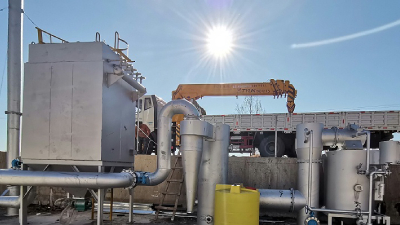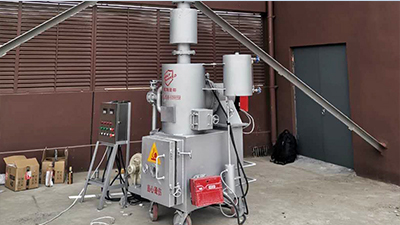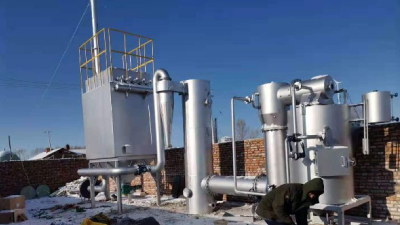1. Characteristics of the combustion process
In general, the combustion target of solid fuel is mainly to utilize thermal energy, while the incineration target of domestic waste is mainly harmless treatment, and the pursuit is that the domestic waste can be fully burned in the waste incinerator. For this reason, the
waste incineration process usually adopts a higher excess air ratio operation mode, and the actual air supply is generally 70%-120% higher than the theoretical air volume. At the same time, in order to overcome the accumulation of local air (oxygen ) transmission obstruction phenomenon, the garbage incineration grate must be designed so that the garbage layer is always in a turning state, so as to facilitate the full combustion of domestic garbage.
2.the characteristics of thermal energy utilization
Although the main goal of waste incineration is to fully burn the waste, the importance of energy recovery in waste incineration has also been fully recognized and reflected in the design of modern waste incineration plants. , high concentration of hydrogen chloride, has a greater corrosiveness to the material, and the heat energy recovery system is also significantly affected. For this reason, the incineration waste heat utilization system generally does not set the superheater in the strong radiation area of the furnace, so that the temperature of the superheated steam is limited; the temperature of the flue gas leaving the heat energy recovery section is generally not lower than 250 °C, which also affects the efficiency of heat energy recovery. The application of steam air preheater will also cause the loss of available steam energy, so the heat recovery rate of MSW incineration is usually more than 10% lower than that of coal-fired boilers.

The characteristics of environmental protection
There is the possibility of secondary pollution in the process of transportation, storage and combustion of municipal solid waste. The most important one is flue gas pollution, including air pollutants such as particulate matter, SO2, HCL, NOx, heavy metals and toxic trace organic matter. General pollutants other than oxin. However, there is still a lack of technically reliable and economically feasible terminal purification processes such as NOx and dioxins, which can only be regulated by process control in the combustion process.
Holy Shield is a professional solid waste treatment equipment manufacturer with rich technology and R&D capabilities. Our
waste incinerator products are easy to operate, environmentally friendly and harmless, reliable in quality, smokeless and odorless, environmentally friendly and energy-saving, and low in cost. They can meet the environmental protection standards of GB18485-2014 for domestic waste incineration, helping enterprises to harmlessly reduce and reduce waste.



